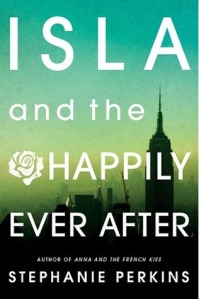 The summer before her freshman year of college, Lucy Sommersworth embarks on a European adventure for a taste of freedom before sacrificing her dreams of acting to focus on business in school. Accompanied by Charlene, a new friend and fellow college student, the pair purchase rail passes to crisscross the continent and meet many characters along the way.
The summer before her freshman year of college, Lucy Sommersworth embarks on a European adventure for a taste of freedom before sacrificing her dreams of acting to focus on business in school. Accompanied by Charlene, a new friend and fellow college student, the pair purchase rail passes to crisscross the continent and meet many characters along the way.
Landing in Florence, Lucy and Charlene check in at a hostel in the heart of the city with the goal of exploring the famous Italian locale — and it’s not long before they meet Jesse Pallatino, a New Jersey native currently bumming his way around Italy busking for cash.
What follows is a whirlwind romance that sizzles in the Florence sun . . . but threatens to implode when Lucy returns to Philadelphia, where she begins her practical education but struggles to forget the amazing summer they shared. As the pair try to determine if and how they fit into each other’s lives, Lucy undergoes a metamorphosis all her own.
April Lindner’s Love, Lucy is a sweet — if predictable — young adult novel perfect for armchair travelers. With its warm Italian breezes, vivid scenery and romantic settings, Lucy’s time in Europe reads like something out of a dream . . . especially when a guitar-playing free spirit comes on the scene.



Scenes from Florence, 2007
Though I’ll admit to liking the first half of the book — set abroad — more than the second, Lucy is a likeable heroine struggling to appease her difficult father while still being true to herself. In love with theatre, she feels alive on stage . . . but her dad, who happens to be footing the bill for her college education, has little interest in the arts.
After their chance meeting and mutual attraction, it’s Jesse that gets Lucy thinking about how life could be should she leave the safe path her parents have laid for her to chase her dreams. I found the conflict realistic and, for many, familiar: choose the comfortable route, or dare to be bold?
Though Lucy and Jesse never felt totally formed as characters, I didn’t mind the lightness with which I read Love, Lucy. It was sweet, uncomplicated and relatable, especially as Lucy struggles to choose between a new love interest and the wild Jesse. Intimacy definitely plays a role in the storyline, so bear that in mind for younger readers.
If you’d like to take a walk through Italy without leaving the comfort of your porch, Lindner’s fun story may be your ticket. The scenes in Florence and Rome took me back to my own trip there in 2007, and I loved reliving that experience through Lucy’s eyes.
3.5 out of 5
Pub: 2010 • Goodreads • LibraryThing • Amazon • Author Website
Review copy kindly passed along by Estelle. Thank you!
 Here’s what I love about Stephanie Perkins: her stories are romantic and realistic, adorable and heartbreaking. There is just the right amount of salt to balance the sweet — and though her characters do get a “happily ever after” (imagine that!), the road isn’t paved solely in diamonds. You have to stumble on a few ruts, too.
Here’s what I love about Stephanie Perkins: her stories are romantic and realistic, adorable and heartbreaking. There is just the right amount of salt to balance the sweet — and though her characters do get a “happily ever after” (imagine that!), the road isn’t paved solely in diamonds. You have to stumble on a few ruts, too. So I finished John Green’s The Fault In Our Stars on Sunday. I bought it last week in anticipation of a long weekend away as a “treat” to myself, insofar as a book about kids with cancer can be a “treat.”
So I finished John Green’s The Fault In Our Stars on Sunday. I bought it last week in anticipation of a long weekend away as a “treat” to myself, insofar as a book about kids with cancer can be a “treat.” Though the humid days and sticky nights will soon fade into autumn, there’s still time to enjoy a summer treat — and Emery Lord’s Open Road Summer may well be it.
Though the humid days and sticky nights will soon fade into autumn, there’s still time to enjoy a summer treat — and Emery Lord’s Open Road Summer may well be it. Seventeen-year-old Prenna James knows the rules. In exchange for her freedom, she and her fellow travelers must not let anyone know where — or, more specifically, when — they come from. That a group of “immigrants” has found a way to open a portal in time to journey back to an illness-free Earth is a wonder . . . one that cannot be discovered.
Seventeen-year-old Prenna James knows the rules. In exchange for her freedom, she and her fellow travelers must not let anyone know where — or, more specifically, when — they come from. That a group of “immigrants” has found a way to open a portal in time to journey back to an illness-free Earth is a wonder . . . one that cannot be discovered. What an intriguing little book.
What an intriguing little book. Best friends Georgia and Riley don’t keep much from one another — but each is bearing a tart fruit of secrecy in different ways. When an opportunity to visit Mexico as part of a group community project comes up, Georgia longs to get away from her stagnant present before college . . . but is afraid to go alone. She convinces Riley to sign up, too — and their secrets can’t help but emerge in the baking-hot sun of Anapra.
Best friends Georgia and Riley don’t keep much from one another — but each is bearing a tart fruit of secrecy in different ways. When an opportunity to visit Mexico as part of a group community project comes up, Georgia longs to get away from her stagnant present before college . . . but is afraid to go alone. She convinces Riley to sign up, too — and their secrets can’t help but emerge in the baking-hot sun of Anapra.